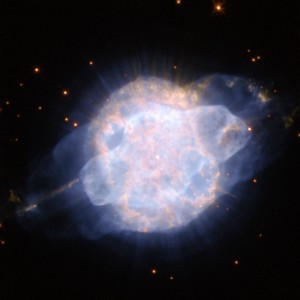I recently purchased a copy of The Cambridge Double Star Atlas (highly recommended and have just ticked off my list a planetary nebula which I haven’t seen before located in the constellation Centaurus. NGC 3918 is not one I will be rushing back to as it only appears like an out of focus star. The one thing that is worth mentioning about it is the obvious blue colour.

The following information is from Wikipedia. NGC 3918 is a bright planetary nebula in the constellation Centaurus, that is called the “Blue Planetary” or “The Southerner”. It is the brightest of the far southern planetary nebulae. This nebula was discovered by Sir John Herschel in March 1834, and is easily visible through small telescopes. The round or even slightly oval diameter is telescopically between 8 to 10 arcsec, though deep images extends this to about 19 or 20 arcsec. More surprising is the beautiful rich blue colour that looks much like the coloured images of Neptune taken by Voyager 2 in 1989.